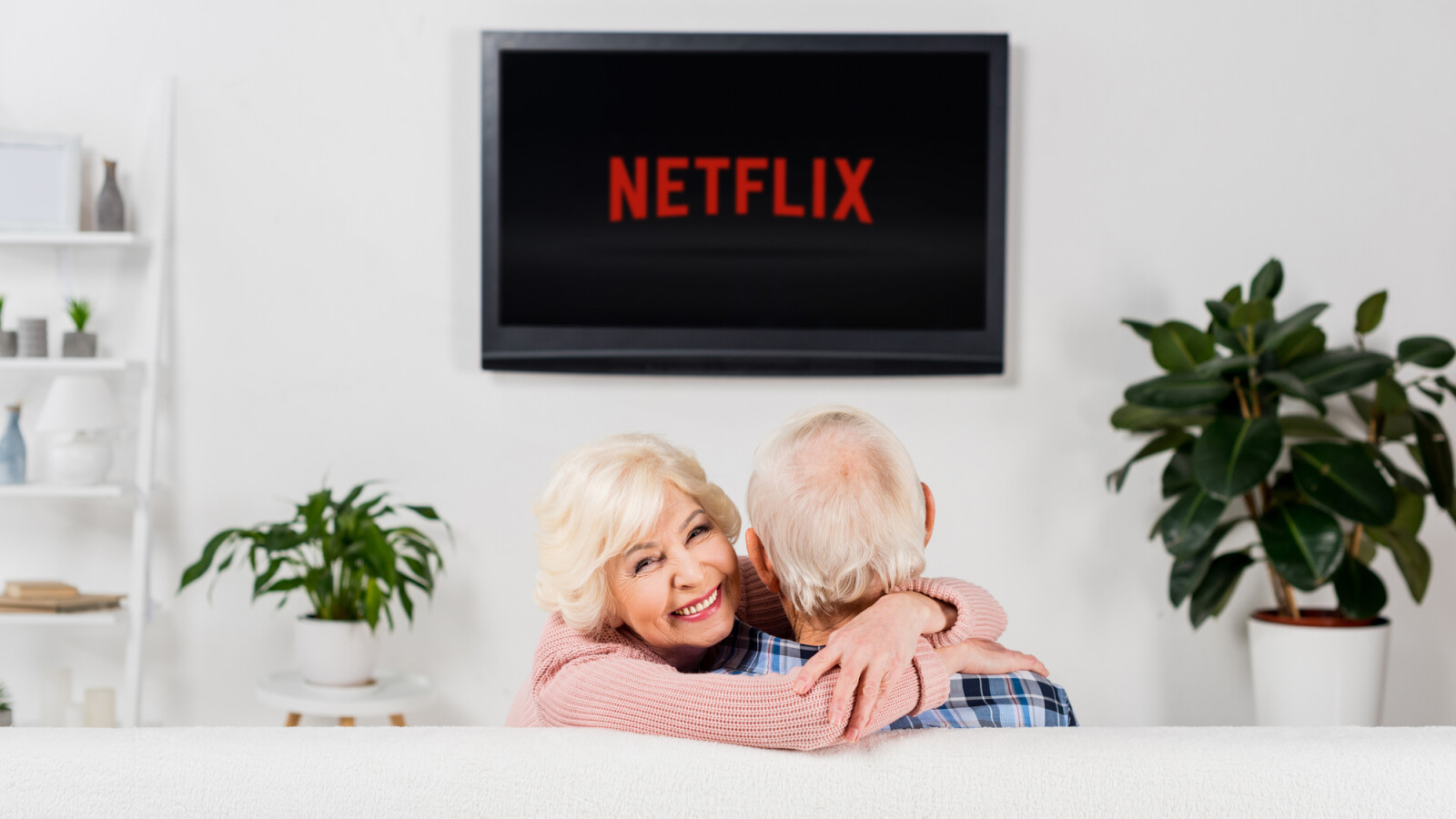You can use the TV adapter to send the sound from your TV to your hearing aid at the right volume. So you can watch TV without massively increasing the volume.

Movie nights with family and friends aren’t easy for people with hearing problems. The sound is often too quiet for them or, if they have a hearing aid, it is not optimally adjusted to the sound on the television. But there are solutions.
These solutions come in the form of TV adapters and similar sound adjustment devices. They transmit audio signals from the television directly to an appropriate hearing aid and adapt the sound to the individual hearing abilities of the wearer.
Sounds a bit complicated, but is quickly explained. With this method, hearing aids work like headphones with individual sound adjustment. And best of all: Since the sound is only optimized for the hearing-impaired person, all other viewers don’t have to make any compromises when it comes to the acoustics.
Connecting TV to hearing aid: This is important
Most of these TV adapters for hearing aids can be connected to current Smart TVs both via Bluetooth and via cable. Of course, for a Bluetooth connection, both your hearing aid and the television must be Bluetooth-compatible.
In any case, it is worth talking to the dealer of your hearing aid first. Here you can ask what options you have to connect your hearing aid to the television. If you are about to buy a new hearing aid, you should research the relevant properties beforehand.
If you watch a lot of TV, you should rather use a hearing aid that is as uncomplicated as possible and compatible with many TV adapters. We have selected some brands of hearing aids that can be adapted particularly well to televisions and other devices:
Hearing aid brands with matching TV adapters
- Widex
- Oticon
- Kind
- Philips
- Signal
- On the phone
- Interton
If you don’t want to adjust your new hearing aid using a special hearing program (more on this later in the article), you need the right TV adapter to connect the hearing aid to the television.
The devices previously referred to as TV adapters can actually be divided into TV streamers, connectors and adapters. Since we want to keep it simple in this article, we will continue to refer to all of them as TV adapters in the following.
Widex TV Play Widex TV Play is one of the most famous TV adapters for hearing aids. (Source: Widex Hearing Aids)

Many manufacturers of hearing aids offer the right hearing aids for their products. An example is Widex TV Play. The accessory is primarily compatible with Widex 2.4 GHz hearing systems and, according to the manufacturer, should transmit the highest stereo sound quality directly to the ears.
To do this, TV Play is connected to the television by cable. You then connect your hearing aid to the hearing aid simply by switching it on via Bluetooth. Since the device handles the Bluetooth connection, your TV does not necessarily have to have Bluetooth for setup.
TV Play is now ready to use. However, we recommend that you also download the official Widex Evoke App. This app automatically adjusts your listening experience to your needs, and you can use it to manually personalize pitch, equalizer, and sound settings.
This is another device from the manufacturer Widex TV-Dexwhich also enables wireless transmission of so und from the television to the hearing aid.
Oticon TV Adapter 3.0 The Oticon TV Adapter 3.0 comes to your home with all the important connection cables. (Source: Oticon)

If you have an Oticon hearing aid, the Oticon TV Adapter a good choice. Device and television are connected to the television by cable, as with Widex TV Play. The hearing aids are then coupled to the television either via Toslink, RCA output, jack output or Scart output.
Setting up via Toslink is recommended. Advantage: Your hearing aid does not necessarily have to be Bluetooth-compatible for setup and use. However, to use non-Bluetooth-enabled hearing aids, you also need the Oticon Streamer Pro.
Here, too, an app takes over all the important functions for controlling volume, programs and Co. Like Widex Evoke, the “Oticon ON App” is available free of charge for Android and iOS.
StreamLine TV signals Signia StreamLine TV pairs with your Signia hearing aids within 30 seconds. (Source: Signia)

If these setup methods are too complicated for you, maybe StreamLine TV signals right for you. StreamLine TV is a small box that you connect to the power grid and your television.
Your hearing aid is paired directly when you remove it from the charging station or by opening the battery compartment. Now place your hearing aid on the StreamLine TV device and the blue LEDs will light up for thirty seconds to indicate that pairing is complete.
Then Signia StreamLine TV is ready for use. Again, you’re using an app to customize your listening experience. The “Signia App” is used for this.
Phonak TV Connector und TV Link 2 The Phonak TV Connector is one of two solutions for Phonak hearing aid owners. (Source: Sonova Germany / Phonak)

Phonak offers two different devices for in-house hearing aids. Phonak TV Connector works similar to the TV adapters described above and automatically pairs with the TV via Bluetooth.
If you don’t have a Bluetooth hearing aid, use it Phonak TV Link in combination with an additional streamer (e.g. ComPilot) that transmits the signal wirelessly. This method is a bit more complicated and expensive, but is a good alternative for people with non-Bluetooth hearing aids.
TV adapter prices
All of these TV adapters are tied to the hearing aid brand. This means that only Widex hearing aids, for example, work properly with the Widex TV Play. Each manufacturer usually offers an individual solution, which you should ask your trusted hearing care professional about.
The prices for such TV adapters are between 100 and 300 dollars. A proud price. Measured against the additional quality of life that these devices give people with hearing problems, the purchase price should probably be a small obstacle. Especially since it is a one-time investment for many years.
HDMI converter
You can do it with these tricks
With the right HDMI converter, you can convert the signal from USB, DVI, VGA and DP sources to HDMI. With these tricks, connections are no longer a problem.
Apart from that, there are also TV amplifiers that amplify the audio signal for owners of hearing aids in a similar way and are not tied to one manufacturer. However, these devices usually do not offer any individual adjustments to your listening habits and are often extremely expensive.
Every manufacturer offers suitable solutions
By the way, the TV adapters we listed above are just a few examples. Of course, other manufacturers also have suitable solutions ready, including Bernafon (SoundGate) or Unitron (uTV 3 transmitter).
Alternatives to TV adapters
In addition to TV adapters, you have a few other and mostly cheaper options for configuring your hearing aid to the sound of your TV. For the first option, you need to ask your hearing care professional for help.
Have the audio program set up for the TV
If you wish, they can adjust one of the programs on your hearing aid so that it is specially tuned to the frequency of the television. Most hearing care professionals will accommodate your request without much trouble, of course you have to pay them a visit.
For spoken sound, for example in news programs or talk formats, this way is absolutely sufficient and delivers good results. However, it becomes problematic when sound levels overlap on television, for example in films, music programs, series and games.

News programs can also be understood well with a set listening program. But that is not a permanent solution. (Source: EvgeniyShkolenko/depositphotos.com)
The multiple layers of sound mix up so that you cannot enjoy clear sound with your hearing aid even with the preset program. The very cheap solution via a special programming of your hearing aid is only for those of you who mainly consume news and talk shows.
wireless headphones
Another option is headphones. Although they have the advantage that other people in the room are not disturbed if you turn the volume up a little for you, many of the headphones available on the market do not allow individual hearing adjustment for the hearing-impaired.
It’s a little different with wireless headphones that have been specially optimized for the hearing-impaired. These usually deliver perfect sound via radio frequency, which at least offers the hearing-impaired a better sound experience than standard headphones for 20 dollars from the electronics market.
Bluetooth headphones tested: These are the best on-ear and over-ear headphones
NETZWELT may receive a commission from the retailer for links on this site. More info.
However, wireless headphones for the hearing impaired are rarely used today. One reason for this might be the price. You usually pay as much for good wireless headphones as for a TV adapter.
On the other hand, wireless headphones are visually much more visible and have to be worn all the time when watching TV, while with TV adapters you usually only have to wear a small device around your neck, often not even having to wear an additional device at all. Many TV adapters can be unobtrusively hidden behind the television.
Best solution for people with hearing aids
In the end, the TV adapter therefore remains the best solution for the hearing-impaired who watch television regularly and not only consume news and talk shows. The purchase price is not exactly cheap, but the TV adapters are almost invisible, easy to set up and offer a listening experience that is individually tailored to you.
Don’t miss anything with the NETWORK-Newsletter
Every Friday: The most informative and entertaining summary from the world of technology!
Table of Contents








.jpg?width=1200&height=630&fit=crop&enable=upscale&auto=webp)